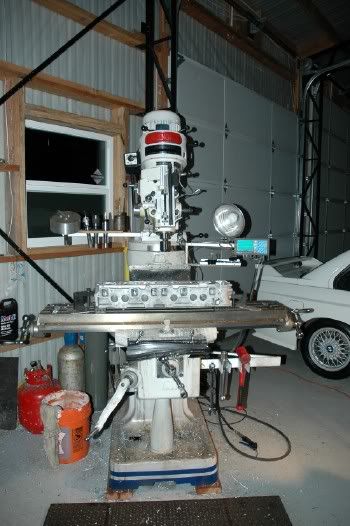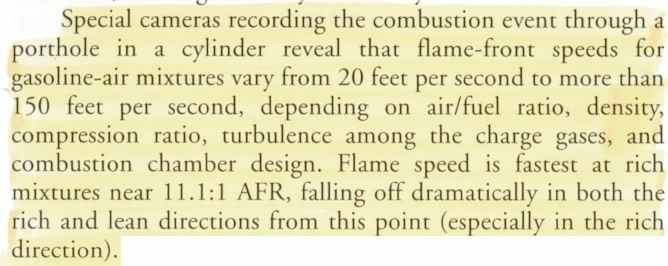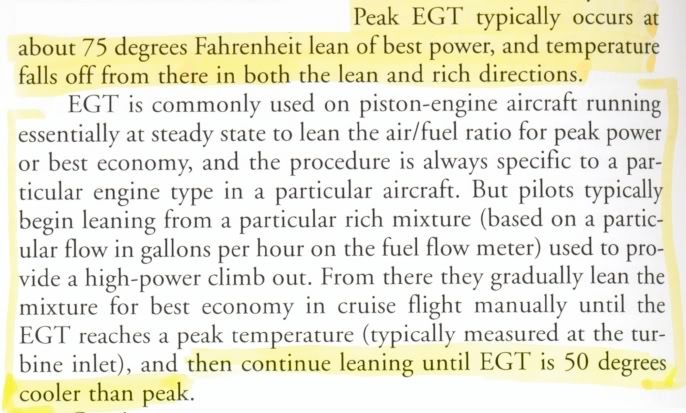-
Posts
2943 -
Joined
-
Last visited
-
Days Won
23
Content Type
Profiles
Forums
Blogs
Events
Gallery
Downloads
Store
Posts posted by RTz
-
-
This thread will go back on topic or it will be closed.
pavcon, I can appreciate English not being your first language. However, its no excuse for name calling or direct insults. You've been warned. If you would like to discuss this further, PM me and we'll sort it out.
Good Day,
-
Again, is this with oil or moly? The spec that I received with my head stud kit gave both numbers, and they were quite a bit different. It sounds like they may have changed their spec, but the 60lb-ft number is closer to the number I had for motor oil.
Now that I am looking at it, 60lb-ft with moly would be getting pretty close to the yield strength of the stud, according to the spec they supplied with mine.
Tim,
I just opened a new box of ARP head studs and the paperwork specifies 60 with moly lube.
main cap? head to block specs is what i need. maybe thats just different terminology but idk lemmie know.Not different terminology... different part. The main cap is the cast piece that fastens the crankshaft in, and contains the lower bearing half.
Stock head bolt torque spec (done in three stages)... 29 lb/ft, 40 lb/ft, and finally 60. There is a recommended sequence, so either do some searching here or pick up a Haynes manual, FSM, etc, etc.
-
Definatly my CNC machine.. Right...

I agree, its not the most used tool in the shop... but it is my favorite. No CNC though, just manual.
-
-
-
Once we were above 12.5, the differences in TIT AND TOT observed were 'insignificant' on our instrumentation, so it may well have followed the same trend given the 25 degree and 50 degree trends.
There are probably a few of us that would be interested in your interpretation of the delta's of the TIT/TOT's?
-
Moved and Retitled.
-
However, I think it's extrordinarily difficult to 1) determine what AFR is best at each RPM/load point and 2) to tune to the desired AFR once it's know.
As Tony mentioned, its reasonably straight forward on a static dyno... and thats the key. With the dyno holding you at a specific RPM, you can tune for MBT (mean-best-torque). I wouldn't even begin to try it on an inertia dyno.
-
You can put tons of fuel, but it only burns at one rate.
Thats contrary to my experience, and Hartmans....

These two snips were taken from his book "How to Tune and Modify Engine Management Systems".
My findings don't always jive with his, but often enough to justify reading his stuff.
-
According to Jeff Hartman...

-
both sides of the coil have power but no fire from it to the distributor
Do you mean to say that you measure power on both sides or that you ran power to both sides? Former is correct and the latter is not.
-
I think its a pretty well accepted fact that 12.5:1 is ideal conditions for max power in petroleum powered internal combustion engines (all other things being equal).
Not everyone would agree

I've never seen an engine that was 'happiest' with one AFR across the board. I've only occasionally seen an engine make MBT (mean-best-torque) at 12.5. Most NA motors are a bit 'soft' at 12.5 and frequently even at 12.8. I commonly see MBT in the 13.3-13.5 range, sometimes leaner, sometimes richer, and never the same from one RPM range to the next.
-
On all our equipment, PST is the ONLY allowable sealant for tapered threads. If I go to a site and see teflon tape on ANY of the joints, I am to note it specifically as to location & condition, inform the customer that he is to remove the affected fittings and redope with PST 597 or equivalent (High Strength PST preferably) and if they refuse, get them to sign a release of liability before proceeding with ANY further work.
Tony,
I did some searching on the PST 597 without much luck. Google, McmasterCarr, etc. The closest thing I could find is a Loctite product 592.
http://rshughes.com/products/079340_59231.html
Is 592 interchangeable for our purposes?
Thanks,
-
I heard that Prime EMS has a deal going with the Libians to acquire the nodule technology...I WANT...I WANT!!

Wiki D thinks he knows 'all that', but the reality is that the NFPA shut that facility down. We're not supposed to get into politics around here, so were not going down that road... lets just say some people are no longer 'with us'.
And Libia?... PM me if you really want to know.
-
John is being modest... http://forums.hybridz.org/showthread.php?t=126630
11.302@123.91.. on street tires!
-
Woohoo!
Sorry I couldn't make the session today

-
1) A magnetic nonferrous NARP’s valve.
2) #9 resistor.
WRONG on both accounts. Only a flux capacitor will work in this application. Sheeesh.
-
Age has little to do with anything. 16 years ago tomorrow, I married a woman twice my age... I'll be the last to concede age is meaningful.
If you present yourself with reverence, you'll receive the same... in spades.
Those that care about your age, don't get it.
-
Bo,
I hate to say it, but the heads gotta come off. Its either the headgasket (likely), or a cracked head (unlikely), or cracked block (very unlikely).
Sorry Chief,
-
I refuse to click the link

-
What I'm wondering is how to balance this move to stiffer springs against keeping the car drivable on the street. Is it safe to say that by the time you have spring rates high enough so that the bars don't need to be as stiff, that you are on the edge (or perhaps past) where the car is still streetable?
Adding to the others' comments, there's a lot more that contributes to ride quality/harshness than springs. Shocks, tire construction/profile, unsprung weight (especially as you get stiffer), bushings, etc. But don't forget the most important factor... you. Everyone, even amongst the hard-core, has dissimilar tolerance levels. You'll just have to experiment and decide for yourself what's 'streetable'.
-
I've played with some of the bars listed, and even a couple homemade jobs.
For my purposes, LT1 powered autocross car, I like the stiff spring/small bar approach.
Controlling pitch has been a big factor in improving times. Once the springs do that, I've found less dependancy on the bar's. In fact, the bars just hinder compliance and especially corner exit bite (rear bar). As JohnC mentioned, shocks play a significant role in making this viable.
I ran without a rear bar as much as possible, but Eugene has some really tight courses (I think they're world famous for it
 ) and I was never able to fully compensate elsewhere. A stock rear bar is about all I can stand.
) and I was never able to fully compensate elsewhere. A stock rear bar is about all I can stand.I've also had good success with this strategy on other cars.
-
Google Lokar.
-
I don't see the problem... it works for me







Abomination
in Z31 Series - 300ZX
Posted